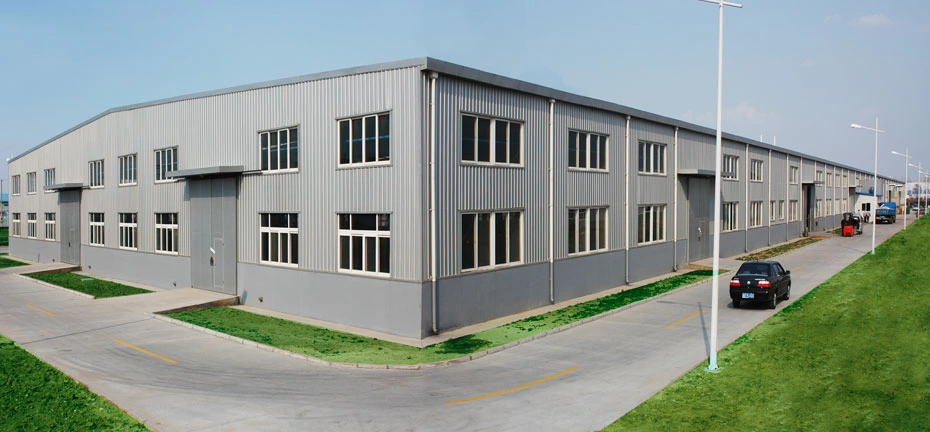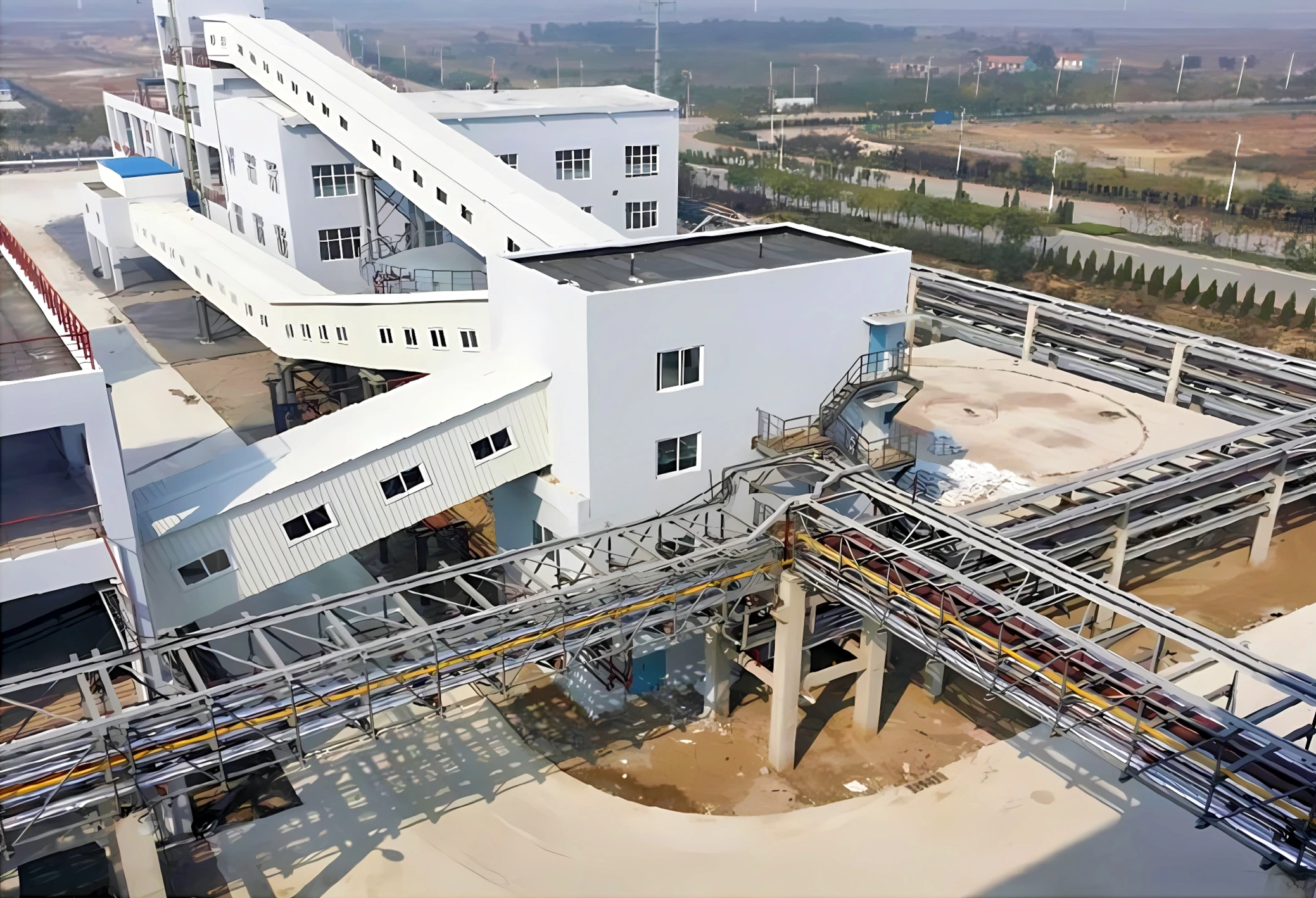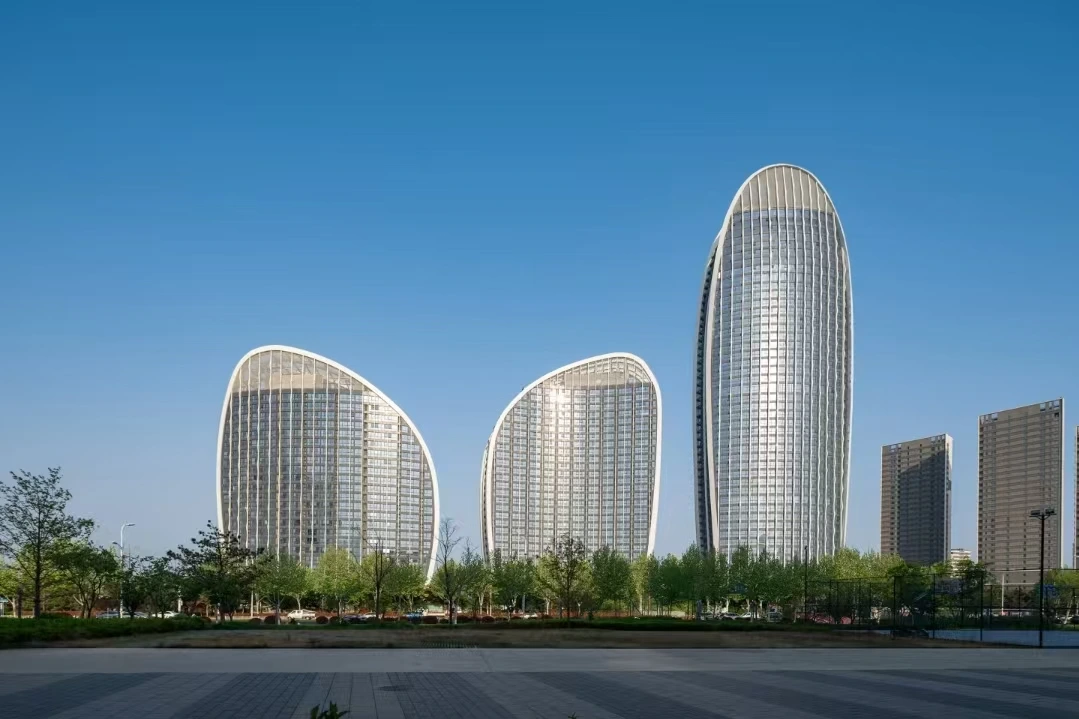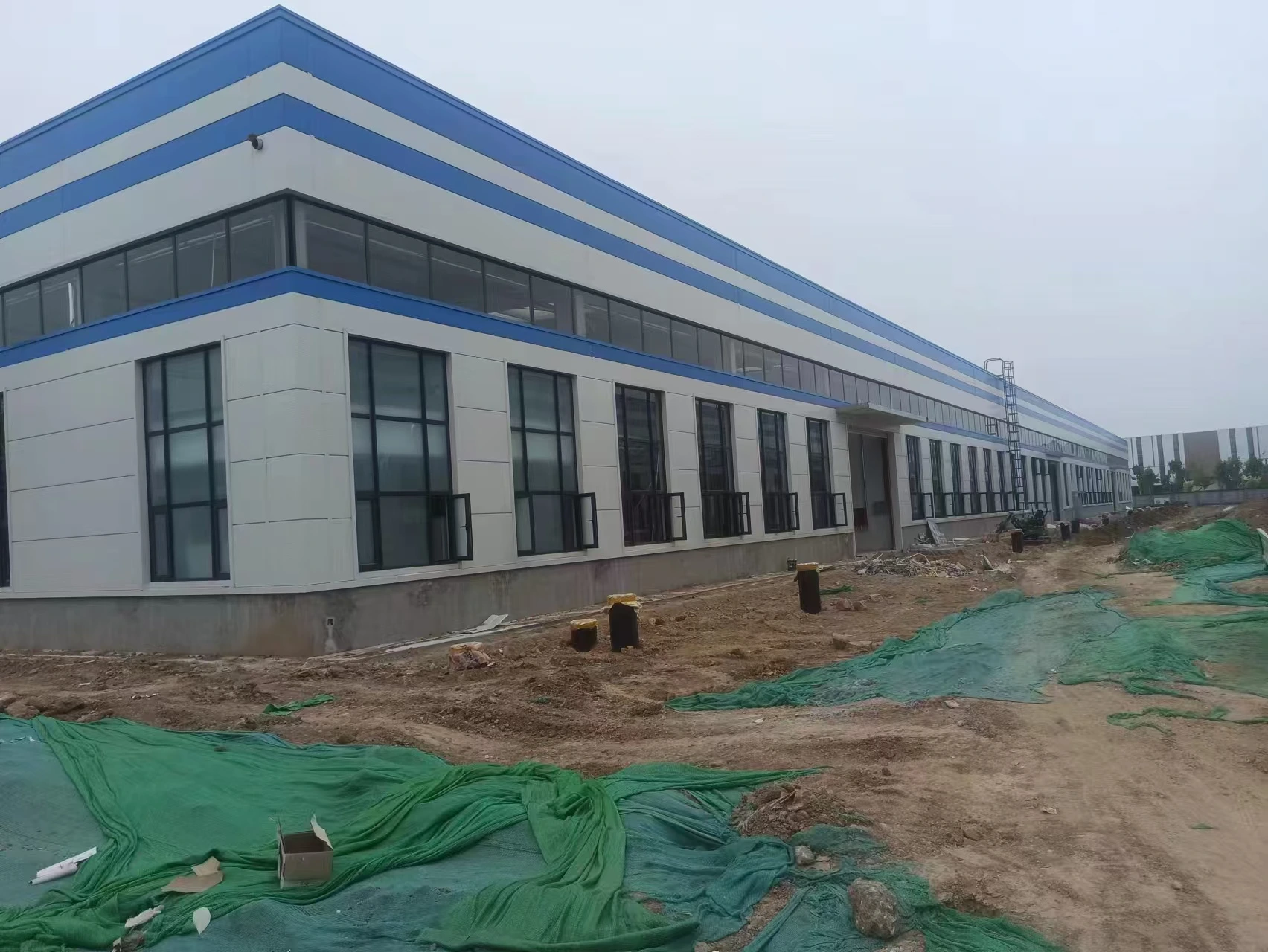Boding Power, International Lichuang Project
Steel structures have high strength, light weight, fast construction, good earthquake resistance, and recyclability, widely used in factories, bridges and other large-scale buildings
Boding Power, International Lichuang Project
Project Overview
The Lichuang Technology Industrial Park Project covers an area of 1,000 mu. Its planned domestic first-class smart factories and various R&D and production bases widely adopt steel structures in factory building main structures, storage facilities, etc. The application of steel structures can meet the production needs of large-span and large-space, providing a spacious and flexible working environment for the R&D and production of intelligent electronic control assembly systems for engines, flywheel energy storage systems and other products. Meanwhile, compared with traditional concrete structures, steel structure construction is more efficient, which can effectively shorten the construction period of the industrial park and help the project put into operation as soon as possible.
Project Challenges and Solutions
Challenge of Precision Control in Large-span Factory Steel Structure Installation
Challenge: The smart factory of Lichuang Technology Industrial Park needs to meet the requirements of large-span production space. Some factory buildings have a span of more than 30 meters, and the installation precision of steel structure roof trusses and columns directly affects the overall stability.
Solution: BIM technology is used to establish a 3D model to simulate the component installation path and node docking status in advance. The positioning parameters of each steel column and beam are input into the model and QR codes are generated. During construction, real-time calibration is carried out through total station combined with BIM model, with precision controlled within ±3mm; meanwhile, settlement observation points are set during the construction of foundation embedded parts, and data are recorded every 24 hours. The installation sequence is dynamically adjusted according to the settlement trend to avoid cumulative errors.
Quality and Schedule Control During Construction
Challenge: During the construction process, the welding, bolt connection and other processes of steel structures have extremely high requirements. Once not strictly controlled, it is easy to cause quality problems such as insufficient structural strength.
Solution: To ensure construction quality, a detailed and strict construction plan is formulated before construction, specifying the quality standards for each process, and comprehensive technical training and disclosure are conducted for construction personnel. A third-party quality supervision agency is introduced to supervise the entire construction process, and regularly inspect welding quality, bolt tightness, etc.
Challenge of High-altitude Hoisting and Safety Control
Challenge: The installation of factory steel structures involves a lot of high-altitude operations, and some components are hoisted at a height of more than 20 meters. There are also scenarios of collaborative operations of multiple cranes, which are prone to collision or hoisting imbalance risks.
Solution: A special hoisting plan is formulated. According to the component weight (the maximum roof truss reaches 8 tons), a 25-ton truck crane and a 50-ton crawler crane are used for collaborative operation. A wireless synchronization control system is adopted to ensure that the lifting speed difference between the two devices does not exceed 0.5m/min; a warning zone is set within a 5-meter radius of the hoisting, equipped with an intelligent safety helmet positioning system, which automatically gives an audible and visual alarm when personnel enter the dangerous area; all hoisting slings adopt anti-torsion steel wire ropes, and tension sensors are installed at the hooks to monitor load changes in real time, and the hoisting power is automatically cut off when overloaded.
Technical Highlights
- Application of New Prefabricated Steel Structure Assembly Components: New prefabricated steel structure assembly components are adopted, which reduces on-site welding work, lowers construction safety risks, and improves the overall stability of the structure.
- Double Reinforcement Technology for High-strength Steel Joints: To meet the dynamic load requirements of 50-ton heavy equipment, Q355B high-strength steel and "groove welding + bolt reinforcement" composite connection technology are innovatively adopted. The welds are 100% qualified after UT flaw detection, and the shear strength of the joints is increased by 30%; combined with the diagonal bracing design optimized by finite element simulation, the natural frequency of the steel structure platform is successfully adjusted away from the equipment resonance range, achieving double safety redundancy under the 8-degree seismic fortification standard.
- Intelligent Hoisting Collaborative Control System: During multi-machine collaborative hoisting, the lifting speed difference between the 25-ton truck crane and the 50-ton crawler crane is controlled within 0.5m/min through wireless synchronization technology. Combined with real-time overload protection of tension sensors and intelligent safety helmet warning system, a dual safety barrier of "equipment linkage + personnel protection" is built. In the hoisting operation of 8-ton roof trusses, the system achieves zero-deviation positioning, which is 50% more efficient than traditional hoisting.
Related Success Cases

Qingdao Zhongrui Logistics Equipment Co., Ltd. Workshop Project
Advanced logistics equipment workshop with efficient production, strict quality control, and national gold award

Qingdao Soda Ash Co., Ltd. Input Belt Project
The input belt project operates efficiently to ensure stable supply of soda ash raw materials

Qingdao World Trade Convention and Exhibition Center
50-meter large-span steel structure convention and exhibition center project


